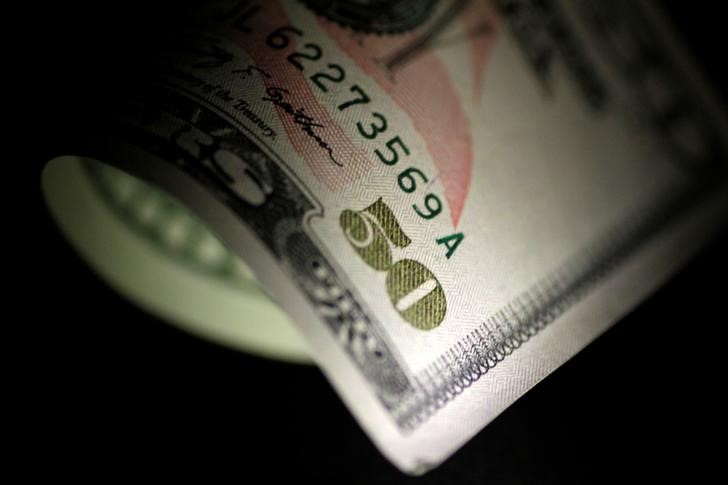By Peter Nurse
Investing.com - The U.S. dollar surged to a six-week high in early European trade Friday, after strong U.S. economic data and hawkish comments from Federal Reserve policymakers pointed to more interest rate hikes.
At 02:00 ET (07:00 GMT), the Dollar Index, which tracks the greenback against a basket of six other currencies, traded 0.5% higher at 104.345, on track for a third consecutive week of gains.
Data released Thursday pointed to a resilient U.S. economy, as the number of Americans filing for unemployment benefits declined unexpectedly last week, while producer prices accelerated in January.
This followed on from retail sales rebounding sharply in January after two straight monthly declines and consumer inflation coming in stronger than expected earlier in the week.
“The data provides ammunition for the Fed to remain in hawkish mode and for the market to continue to price two to three more 25bp Fed rate hikes by the summer,” said analysts at ING, in a note.
The apparent strength of the U.S. economy has seemingly provided room for the Federal Reserve to continue its campaign against inflation with more aggressive interest rate hikes.
Federal Reserve Bank of Cleveland President Loretta Mester said she had seen a “compelling economic case” for rolling out another 50 basis-point hike, and St. Louis President James Bullard said he would not rule out supporting such an increase in March, rather than a quarter point.
Bullard added that a Fed policy rate in the range of 5.25% to 5.5% would be adequate to cool the pace of price increases - above the 5% to 5.25% rate suggested by the Fed policymakers as of December.
This hawkish stance has pushed benchmark 10-Year Treasury yields to their highest levels since late December.
Elsewhere, EUR/USD fell 0.3% to 1.0633, feeling the impact of the surging dollar, trading at its lowest since Jan. 9.
European Central Bank Chief Economist Phillip Lane took something of a dovish stance on Thursday, saying that much of the impact on inflation of the recent increases in borrowing costs is yet to be felt.
GBP/USD fell 0.4% to 1.1941, falling to a six-week low, after U.K. retail sales rose 0.5% on the month in January, stronger than the expected drop of 0.3%.
USD/JPY rose 0.6% to 134.74, climbing to its highest level since late December, with the yen pressured by the rise in U.S. yields.
There remains a great deal of uncertainty over the path of monetary policy under new Bank of Japan Governor Kazuo Ueda, who is due to be confirmed in the post next week.
Ueda faces the daunting task of steering the Japanese economy through rising inflation and weakening economic growth.
The risk-sensitive AUD/USD fell 0.5% to 0.6842, near a one-month low, while USD/CNY rose 0.2% to 6.8765, despite China's top leaders declaring a "decisive victory" over COVID-19.
